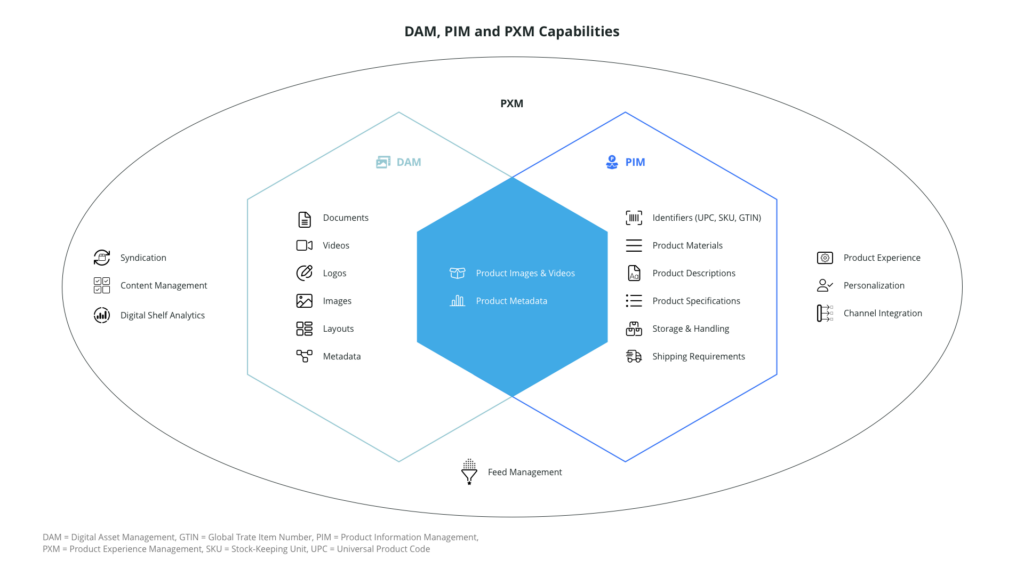apollon recognized in the 2023 Gartner® Market Guide for Product Information Management Solutions
When it comes to developments in IT, we believe Gartner® is the first port of call. According to Gartner®: “When markets are growing and IT solutions are stable yet competitive, Magic Quadrants provide the best tool for understanding the positioning of the providers; however, when new markets emerge and the offerings and user requirements are in flux, solutions are often difficult to compare, making a competitive positioning less useful. Or, when a market matures to the point that the offerings become fairly interchangeable, comparative positioning is less important than an analysis of and recommendations about the market itself. In these scenarios, a Gartner Market Guide can provide the right insight.”

The Market Guide for Product Information Management Solutions
As per Gartner: “The complexity of digital commerce is driving organizations to optimize the creation, maintenance and publishing of product information to downstream channels. Data and analytics leaders should use this Market Guide to evaluate benefits and choices across the product information management market.”**
Gartner on PIM: „The ultimate purpose of PIM is to speed up your time to market, improve all aspects of sales and deliver compelling product experiences across any touchpoint.”
Key findings from the 2023 Gartner Market Guide for Product Information Management Solutions.
- There is confusion between Product Information Management (PIM), Product Experience Management (PXM), Master Data Management (MDM), Product Data Management (PDM) and Digital Asset Management (DAM) software solutions.

- Digital commerce demands multiple versions of product data, presenting data and analytics managers with further challenges that place a significant burden on delivering outstanding customer experiences (CXs).
- In addition to B2C companies, B2B companies are also recognizing the relevance of consistent product information in order to remain competitive via enriched product data.
- Product metadata and product images, among other functions, are available in different PIM, DAM, and PXM technologies, making evaluation among systems difficult and leading to incorrect technology investments.
According to the report, AI has been leveraged within PIM solutions for a number of years to solve some use cases such as autoclassification, but generative AI is a new technology that will revolutionize the amount of time spent on getting a product ready for sale. The impact of generative AI on creating product content in bulk is the first use case that is going to revolutionize the product data space.
The Analysis Basis
Analysis of more than 1,000 end-user interactions about PIM from 1Q22 through the end of 2Q23, which is an increase of 35% in inquiry volume compared to the previous year. In parallel, there were interactive briefings with vendors in which vendors provided Gartner with updates on their strategy, market positioning, recent developments and product roadmaps. The PIM software vendors listed met the following two criteria for their PIM system:
- Enable product, commercial, and marketing teams to create and maintain an approved and shareable version of rich product content.
- Support complex use cases including product data syndication (PDS), PXM, product analytics, product feedback loops, and contextualization of product data for brands, markets, and channels.
**Gartner Research Methodologies, “Gartner Market Guide”, “October 26, 2023”, https://www.gartner.com/en/research/methodologies/market-guide
Gartner, Market Guide for Product Information Management Solutions, By Helen Grimster, 3 October 2023
GARTNER is a registered trademark and service mark of Gartner, Inc. and/or its affiliates in the U.S. and internationally and is used herein with permission. All rights reserved.
Gartner does not endorse any vendor, product or service depicted in its research publications, and does not advise technology users to select only those vendors with the highest ratings or other designation. Gartner research publications consist of the opinions of Gartner’s research organization and should not be construed as statements of fact. Gartner disclaims all warranties, expressed or implied, with respect to this research, including any warranties of merchantability or fitness for a particular purpose.